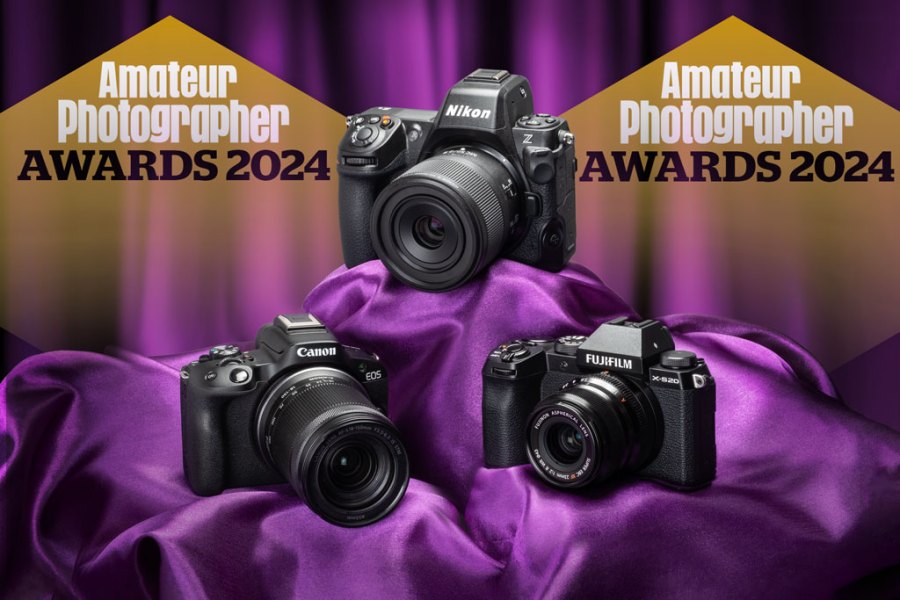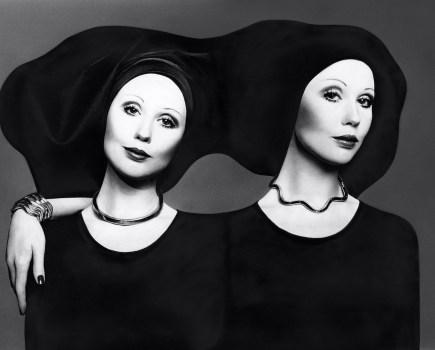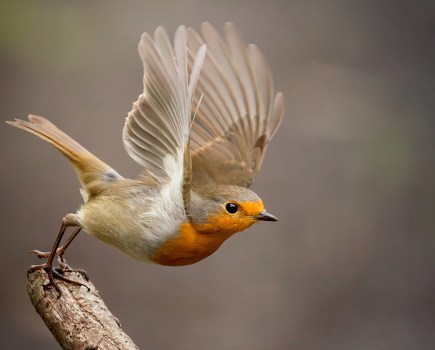It’s that time of year again, as the AP Awards 2024 are announced! As a weekly magazine Amateur Photographer tests more cameras, lenses, software, and accessories than any other UK publication and our tests are widely respected around the world for their independence, quality and depth. The title of best camera phone is hotly contested, with the big brands competing to outdo each other’s features, lenses, and resolution. Representing the best of the best, read on to see our winning cameras of the year.
The AP Awards, which have been an annual highlight in the photography calendar for over 40 years, are held in higher regard within the global camera industry than any other UK award. If you are interested in seeing our winning lenses, see here.
Readers’ Choice Camera of the Year: Nikon Z f
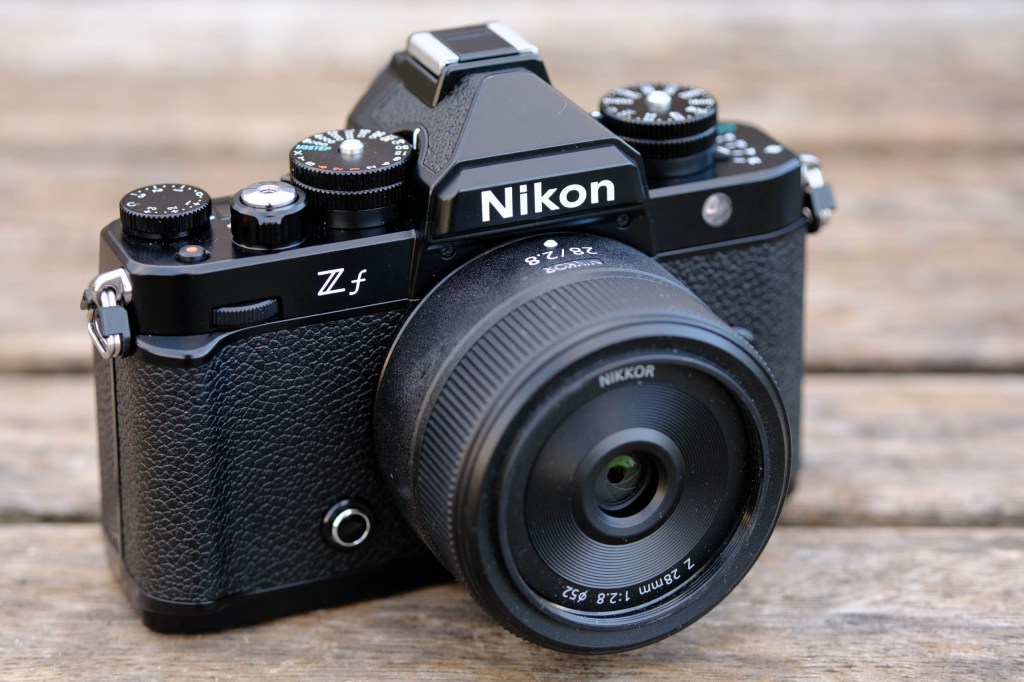
l £2300 l nikon.co.uk
Key features
- Handsome retro design
- Tactile control dials
- Excellent image quality
- Impressive subject detection AF
Nikon fans have long been crying out for a high-end mirrorless camera with classic film-era styling, and in 2023 their wish was granted with the seriously handsome Z f. While the firm’s previous efforts at producing retro-styled cameras haven’t been overwhelmingly successful, it seems that the Z f has struck a wider chord, judging from the result of our readers’ choice vote. It’s not hard to see why.
This camera’s big draw, of course, lies with its looks and shooting experience. Its robust-feeling metal body boasts chunky top-plate dials for shutter speed, ISO, and exposure compensation that click satisfyingly as they’re turned. There’s even a switch to select between colour and black & white shooting. Fold the fully articulated screen in against the camera’s back, and you might almost be able to convince yourself you’re shooting film.
Make no mistake, though, this is a thoroughly modern camera. It packs all the firm’s latest imaging technology, including an excellent subject recognition system which can be used for manual focus as well as autofocus. You get an ISO 100-64,000 standard sensitivity range, 7.8 fps continuous shooting, and 8 stops of in-body image stabilisation. It’s a very desirable camera indeed.
Read our in-depth review of the Nikon Zf here.

Vlogging Camera of the Year: Sony ZV-1 Mark II

l £870 l www.sony.co.uk
Why we like it
- Unique ultra-wideangle zoom
- Improved touchscreen interface
- Easy-to-use vlogging features
- Reliable autofocus system
Sony single-handedly revolutionised the compact camera market with its original ZV-1 vlog camera, and the Mark II brings an array of updates and improvements. Its headline change is the lens, with the new 18-50mm equivalent optic covering a much broader angle, which makes it far more suitable for arm’s length vlogging. This unique ultra-wide view could also be useful for such things as travel or landscape photography. The camera can record both 20MP stills and 4K 30p video.
Sony has again included several features designed specifically to make life easier for content creators. Its Background Defocus option toggles between shallow and extended depth-of-field, while Product Showcase will rapidly switch focus from the presenter to an object held out in front of them. A new Multi-Face Recognition feature aims to automatically keep several presenters in sharp focus at the same time.
One significant update in the Mark II is a new touchscreen interface, which makes the camera dramatically more user-friendly. A three-capsule microphone is built in for high-quality audio, and now offers directional recording options. The overall result is a camera that’s even better suited for its intended purpose. Vloggers will buy it – and love it – in their droves.
Read our review of the Sony ZV-1 Mark II here.
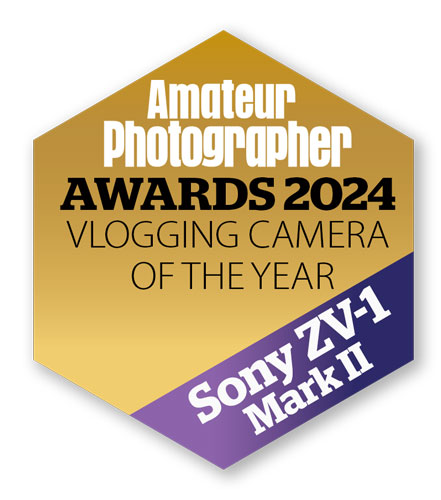
Drone Camera of the Year: DJI Mavic 3 Pro
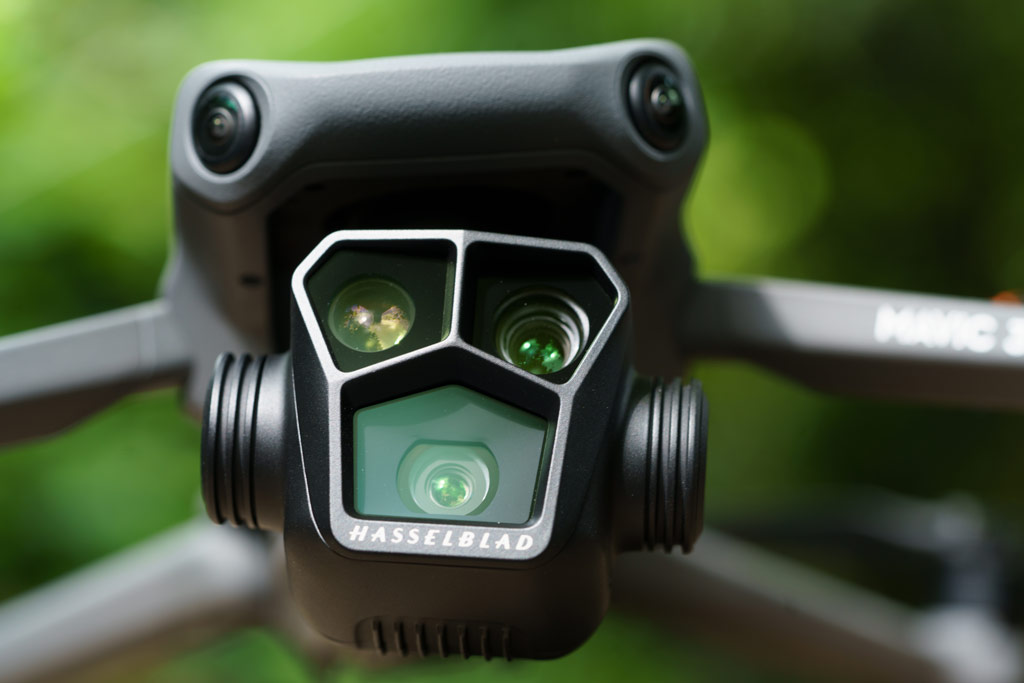
l £1879 l dji.com/uk
Why we like it
- Excellent stills and video quality
- Three focal lengths
- Stable and easy to fly
- Reliable object avoidance system
This impressive drone has all the features of the older Mavic 3, but uniquely it has three cameras mounted via a mechanically stabilised gimbal, instead of two.
It employs the same main camera, which was developed in tandem with Hasselblad and has a 20MP Four Thirds sensor fronted by a 24mm equivalent f/2.8 lens. But this is now joined by two telephoto cameras, with equivalent focal lengths of 70mm and 166mm.
Key features include omnidirectional object avoidance sensors, a microSD card slot for recording your files, and up to 43 minutes flight time, all in a readily portable folding design. Video recording is available in 5.1K resolution up to 50fps from the main camera, and 4K up to 60fps from the telephoto cameras. Two kits are available, with different controllers – we’d actually recommend the cheaper
DJI RC option.
In use, the drone is very easy to fly, and its gimbal does a great job of stabilising the cameras so that the footage is smooth. Its object avoidance system is also reliable when you’re flying manually. The quality of the results from the main camera is excellent, while the two telephoto cameras are also very capable.
Read our review of the Mavic 3 Pro here.
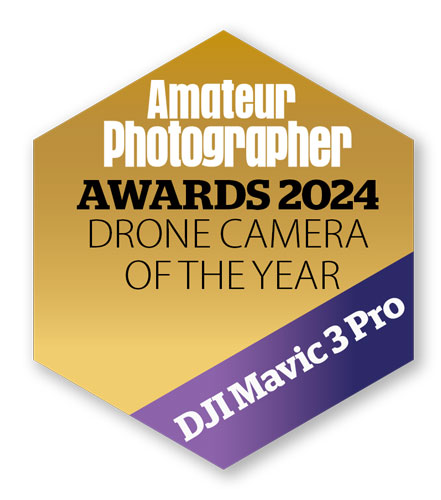
Video Camera of the Year: Panasonic Lumix S5IIX
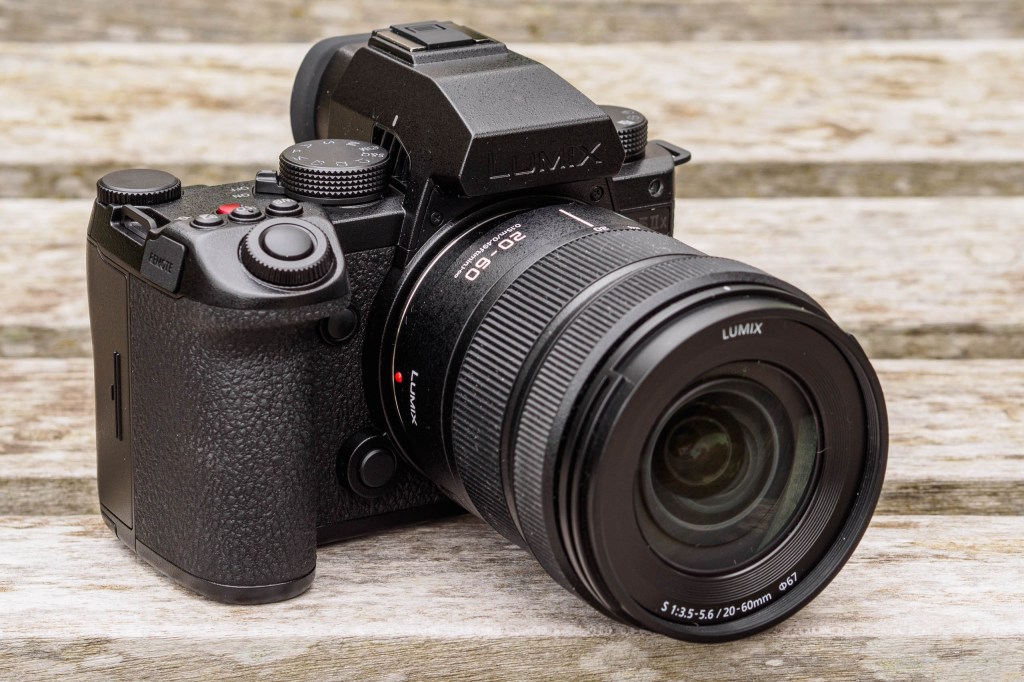
l £2299 body only l panasonic.com/uk
Why we like it
- Reliable phase hybrid autofocus
- Rock-steady in-body stabilisation
- Raw video via external recorder
- Supports external SSD recording
Panasonic has long led the way when it comes to producing cameras that are equally capable for both video and stills shooters, and the Lumix S5IIX follows in the same vein. Announced alongside the similar S5II, it has the same core feature set, but adds in an array of useful extra video features. These make it a uniquely capable tool for serious filmmakers at its price point.
Both cameras can shoot still images at 24MP resolution, with a very usable 96MP multi-shot mode also on board. Video recording is available in 6K resolution at up to 30fps in 4:2:0 10-bit colour. On-sensor phase detection brings much more reliable and stable autofocus compared to previous Lumix models. The user interface is specifically tailored to the needs of videographers, while a fan cleverly built into the viewfinder housing means there’s essentially no recording time limit.
Compared to its S5II sibling, the ‘X’ model acquires some additional desirable features. It’s capable of live streaming, Raw and ProRes output, and the ability to record direct to SSD.
It also gets a distinctive all-black design, with no white logo or markings, to keep it as unobtrusive as possible. It’s a great choice for serious film makers.
Read our review of the Panasonic Lumix S5IIX here.
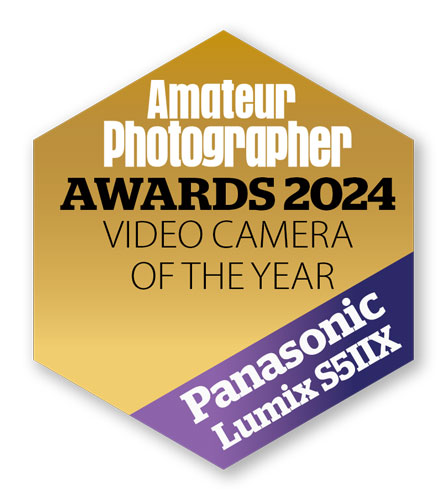
Affordable Camera of the Year: Canon EOS R50
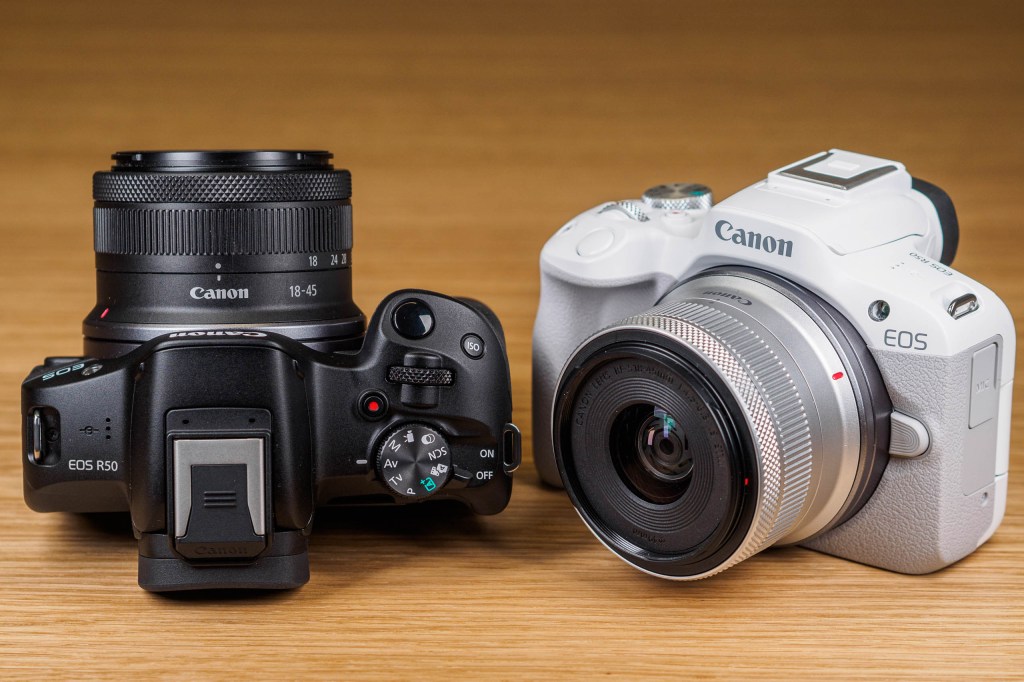
l £769 with 18-45mm lens l canon.co.uk
Why we like it
- Very compact and lightweight
- Extremely capable autofocus
- Rapid continuous shooting
- Excellent out-of-camera JPEG
Canon has a long history of making affordable cameras that are pleasant to use and perform well, with the EOS R50 being the latest example. Despite its entry-level positioning, the camera stands out from its competitors by boasting subject detection AF, which has previously only been seen on more expensive models. This means it can recognise and track focus specifically on people, animals, and vehicles, switching automatically between subject types depending on which it detects. It’s speedy for its class, too, being capable of shooting
at 12fps, rising to 15fps with its electronic shutter.
Canon is also very good at making small bodies that handle well, and that’s exactly what we get here. Despite its petite dimensions and light weight, the camera feels nicely made and comfortable in your hand. Physical controls are kept simple and approachable for newcomers, complemented by an excellent touch interface that extends to every facet of the camera’s operation.
In use, the camera is a slick and polished performer that, thanks to Canon’s punchy colour rendition, delivers really nice-looking JPEG files. Last but not least, it works really well with adapted EF-mount lenses. That counts as a significant attraction for existing Canon DSLR users.
Read our in -depth review of the Canon EOS R50 here.
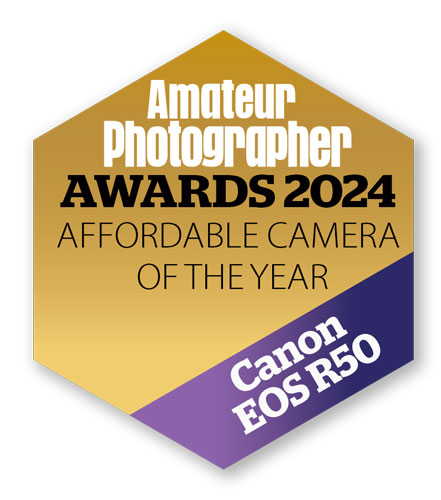
Consumer Camera of the Year: Fujifilm X-S20
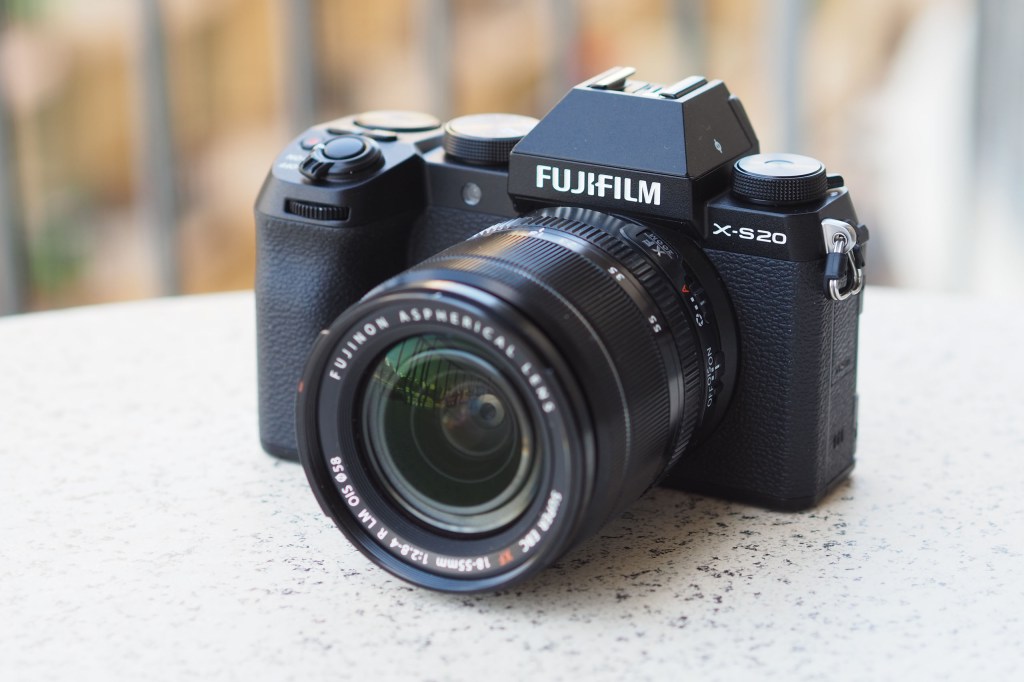
l £1249 with 14-45mm lens l fujifilm.com/uk
Why we like it
- Great image quality
- Advanced subject detection autofocus
- Extensive video options
- Excellent battery life
Designed to be suitable for all types of users, whether that’s stills shooters, videographers, or content creators, the X-S20 is arguably the most appealing camera in its class. Its comprehensive feature list includes a 26.1MP X-Trans CMOS 4 sensor, continuous shooting at up to 30 frames per second, 6.2K 30p video, in-body image stabilisation, and AI-based subject detection autofocus. This is housed in a compact SLR-shaped body that’s easy and pleasant to use.
You get Fujifilm’s incredibly popular Film Simulation modes, with 19 provided on the X-S20. A new Vlog mode is designed for recording yourself, giving quick on-screen access to such features as product priority focus, background defocus,
face and eye detection, and a self-timer. In addition, 4K 60p live streaming works straight out of the box with no need for a capture card or additional software.
Thanks to its large grip and three command dials, the camera handles really well, and almost every button can be customised. Most importantly the X-S20 gives great JPEG images with pleasing colour reproduction, and can be trusted to deliver attractive results time and time again. For the budding or experienced photographer, videographer, vlogger, and live streamer, the X-S20 hits it out of the park.
Read our review of the Fujifilm X-S20 here.
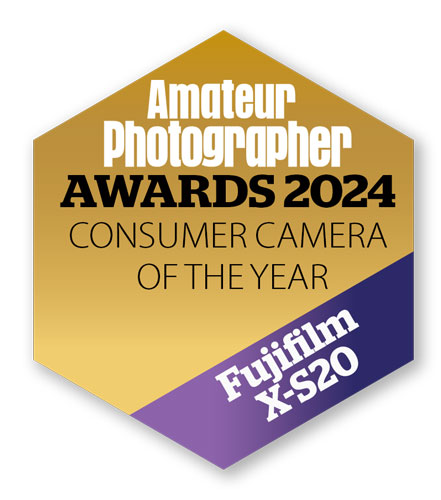
Enthusiast Camera of the Year: Panasonic Lumix G9II

l £1699 l panasonic.com/uk
Why we like it
- Impressive autofocus
- Excellent control layout
- Phenomenal image stabilisation
- Very usable high-res mode
Panasonic’s latest Micro Four Thirds flagship is a hugely capable camera for both photo and video use. Built around a new 25.2MP sensor, it can shoot still images at up to 75 frames per second and record video at up to 5.7K resolution and 60fps. It also boasts an excellent autofocus system, thanks to the inclusion of both phase detection and the firm’s latest subject recognition setup. In-body image stabilisation is particularly impressive, enabling multi-second exposures hand-held, and there’s an unusually effective 100MP multi-shot mode on board, too.
The camera handles really well, thanks to a comprehensive set of well-placed physical controls that are complemented by an excellent touchscreen interface. It delivers excellent image quality in most situations, although the Four Thirds sensor brings some disadvantages for shooting in low-light or with shallow depth-of-field. But in return, it allows you to assemble a lightweight yet extremely versatile kit, especially when paired with Panasonic’s premium Leica DG lenses.
Overall, the G9II is quite simply a brilliant camera, and for existing MFT users looking to upgrade to the latest technology, it’s an obvious recommendation. But equally, it would be an excellent choice for anyone interested in assembling a portable yet highly capable system.
Read our review of the Panasonic Lumix G9 II here.
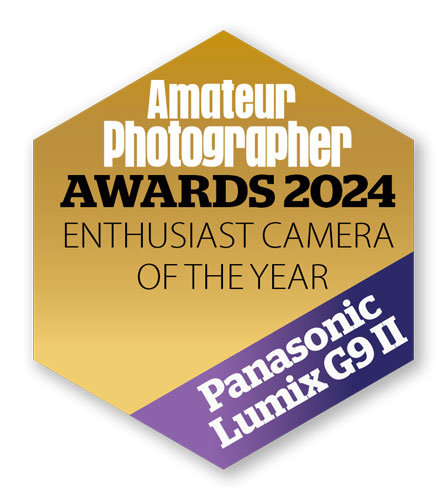
Compact Camera of the Year: Leica Q3
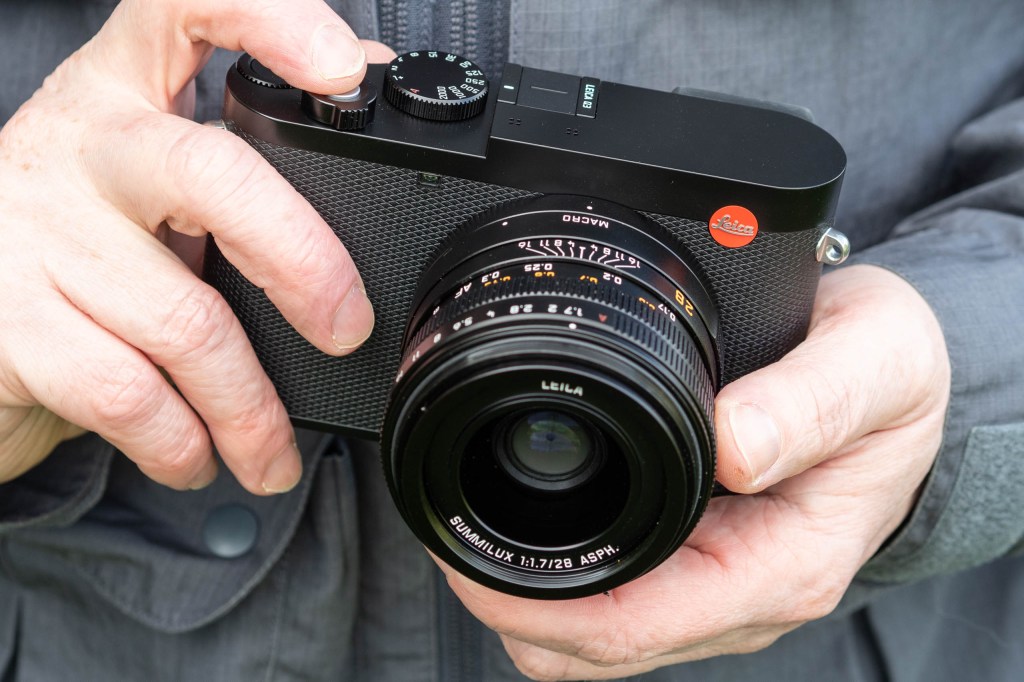
£5300 l leica-camera.com
Why we like it
- Superb raw image quality
- Much improved autofocus
- Engaging dial-led controls
- Useful tilting screen
Leica’s Q-series premium compacts are unique in combining a fixed prime lens with a full-frame sensor. Its latest Q3 brings an exciting slew of updates, chiefly a higher resolution 60MP sensor, a tilting screen, and significantly upgraded autofocus that gains both phase detection and subject recognition. There’s even an optional handgrip that enables wireless charging. As a result, the best compact camera in the world just got better – much better.
All the essentials that define a Q remain in place. On the front there’s a fixed, optically stabilised 28mm f/1.7 lens with traditional manual focus and aperture rings. The body design is reminiscent of Leica’s M-series rangefinders, including a top-plate shutter speed dial. Build quality is exemplary, with a robust weather sealed all-metal shell.
You get a large corner-mounted electronic viewfinder, which is now joined by a rear screen that tilts up and down. This transforms how you can use the camera, being great for such things as such things as low-level macro or discreet waist-level street shooting. Image quality from that 60MP sensor and Leica lens is, needless to say, superb. Overall, the Leica Q3 is a superb performer that’s lovely to use and capable of producing fantastic images.
Read our in-depth review for the Leica Q3 here.
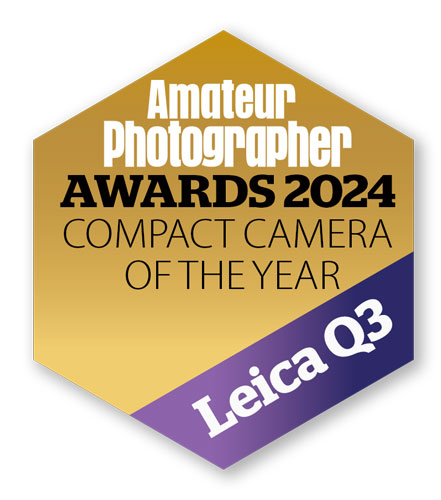
Professional Camera of the Year: Fujifilm GFX100 II
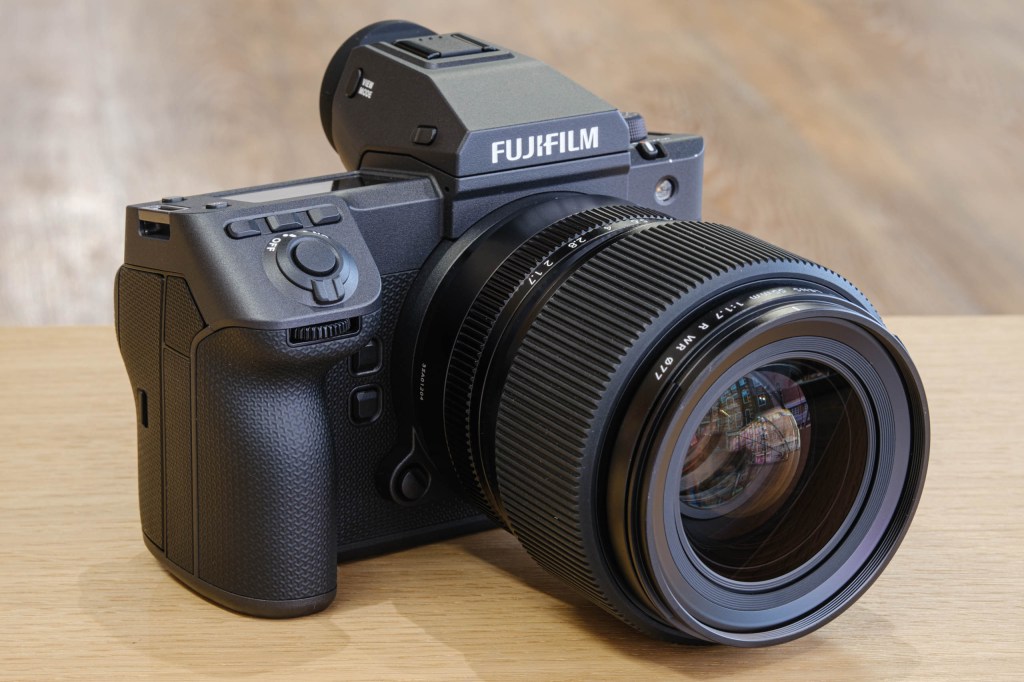
l £6999 body only l fujifilm.com/uk
Why we like it
- Sensational image quality
- Huge, bright viewfinder
- Significantly improved autofocus
- Lovely JPEG output
Fujifilm’s latest GFX flagship brings an array of updates that make it the best medium-format camera yet. Like its predecessors, it employs a 100MP sensor measuring 44x33mm, which delivers absolutely sensational image quality that eclipses any full-frame model. However, the sensor has been redesigned and updated and an array of new features added alongside. The camera also gains a new and much-improved modular body design, including a removable viewfinder that gives a massive and highly detailed view.
Highlight features include Fujifilm’s subject detection autofocus system, continuous shooting at 8 frames per second for up to 300 shots in a burst, and in-body image stabilisation rated for up to 8 stops of shake suppression. There’s a big step up in video capability too, including 8K recording at 30fps, although this comes with a hefty 1.5x crop. More usefully,
it also offers internal 4K 60P recording from the full sensor width, in 4:2:2 10-bit colour. Fujifilm’s signature set of Film Simulation modes is onboard,
giving really attractive colour output.
Given its price point, there’s no point in pretending that the GFX100 II is for everyone. Instead, it’s a camera for serious photographers who demand the ultimate in image quality and know exactly why they need it.
Read more about the Fujifilm GFX100II here.

Innovation of the Year: Sony Alpha A9 III
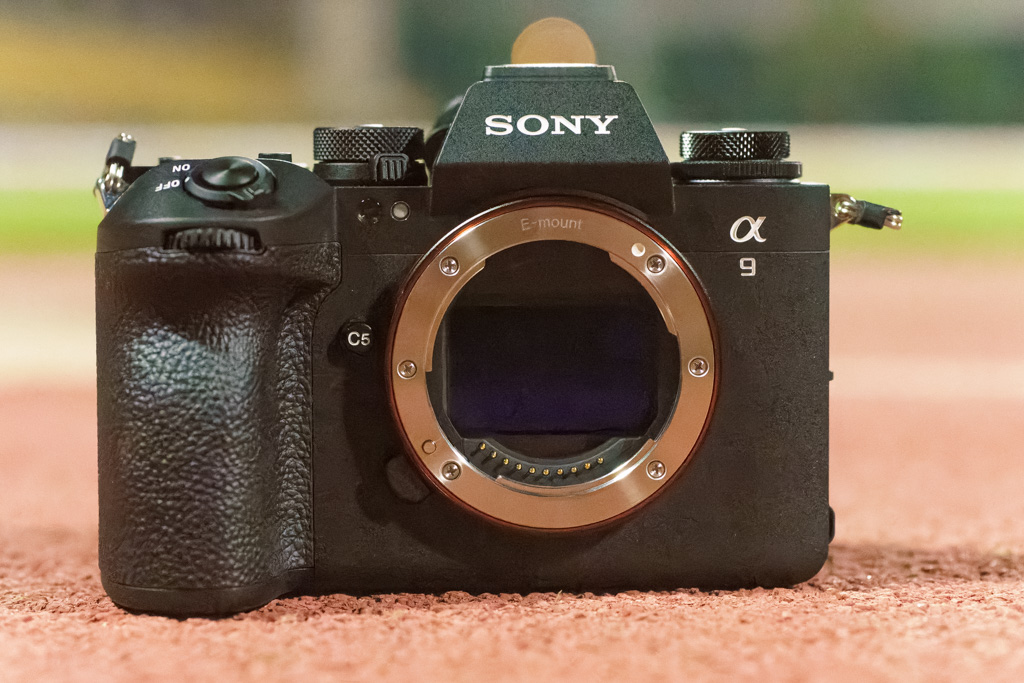
l £6100 l sony.co.uk
Why we like it
- World’s first global shutter
- No rolling shutter distortion
- No banding with artificial light
- Flash sync at all shutter speed
There can be no real argument over the most significant photographic innovation of the past year. Sony’s Alpha A9 III is the first full-frame camera with a global shutter sensor, where every single pixel on the sensor can be read out simultaneously, rather than line-by-line. For the camera’s target audience, primarily professional sports and action photographers, this counts as something of a holy grail, bringing several unique real-world advantages.
So what benefits does the A9 III’s global shutter bring? Firstly, there should be no subject distortion due to rolling shutter, nor any flickering or banding artefacts in artificial light. Flash sync is available at all shutter speeds, without needing to use a power-sapping high-speed sync mode. Sports photographers should also find it’s immune to a phenomenon where parts of LED advertising boards can appear blacked-out.
None of this would matter, though, if the camera itself didn’t back up the clever new technology inside. However, the A9 III is an incredibly impressive machine. It’s ridiculously fast, being capable of shooting 24MP raw files at 120 fps, and its autofocus system is incredible. For those who make their living from shooting sports, it’s a extraordinarily accomplished and compelling option.
Read our review of the Sony Alpha A9 III here.
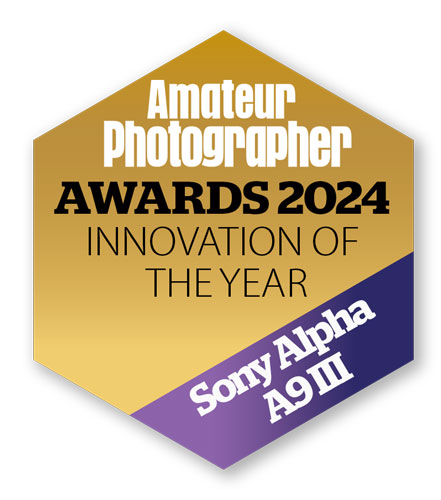
Premium Camera of the Year/ Product of the Year: Nikon Z8
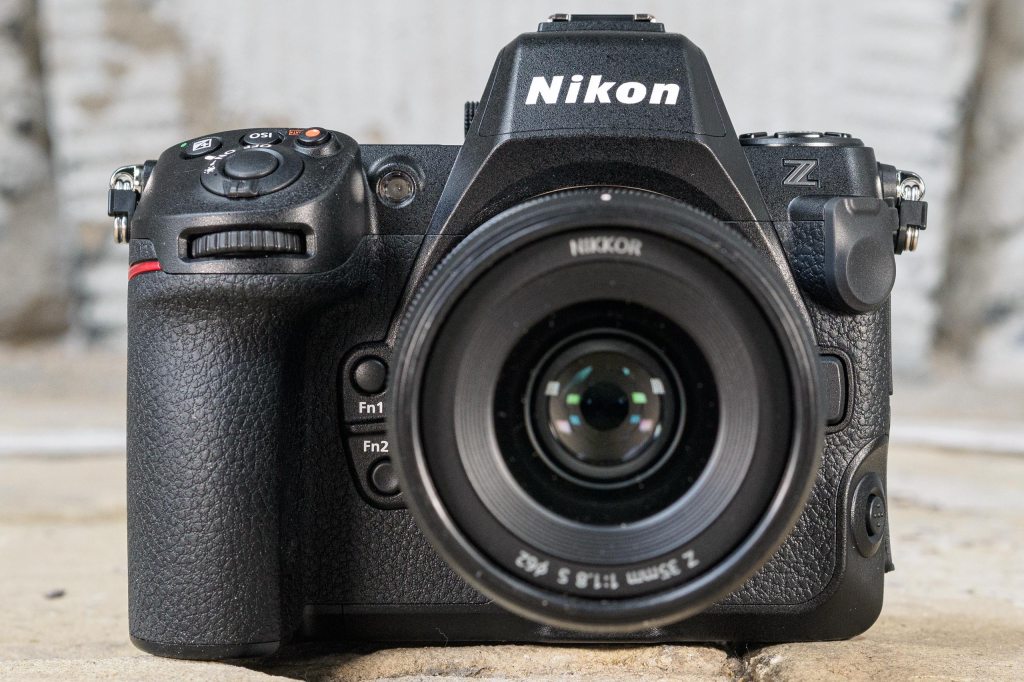
l £3999 l nikon.co.uk
Why we like it:
- Phenomenal subject detection autofocus
- Remarkable continuous shooting
- Pro-spec build and handling
- Excellent viewfinder and screen
Towards the end of 2021, Nikon wowed us with the extraordinary Z 9, which combined rapid shooting and high resolution in a large pro-spec body. Now with the Z 8, the firm has taken the same core components and feature set and squeezed them into a significantly smaller, less expensive model. With an impressive combination of resolution, speed, and cutting-edge autofocus, it’s a camera that can take on any conceivable task.
While the Z 8 is still not cheap, it looks like quite a bargain compared to its main competitors. This is a camera that can shoot 45.7MP raw files at 20 frames per second, while recognising and tracking focus on specific subjects. If you need to go faster, it’ll record full-resolution JPEGs at 30fps, or 11MP JPEGs at 120fps. It can also capture 8K video at 30fps.
Subject recognition autofocus is capable of detecting people, animals, and vehicles, and you don’t necessarily have to specify a subject type in advance. In-body stabilisation promises up to 6 stop of shake suppression. You still get a rugged, weather-sealed body with a comprehensive set of well-placed controls; the major drawback compared to the Z 9 is a smaller battery.

Ultimate all-rounder
What’s most impressive about the Z 8, though is how accomplished it is when faced with shooting practically any kind of subject. The autofocus system is incredibly quick and reliable and allows you to choose between alternate detected subjects with ease. It has the sheer speed and buffer depth to keep up with unpredictable sports and action, along with plenty of resolution for studio, portrait, or landscape photography. Its built-in stabilisation does a great job of keeping hand-held shots consistently sharp. Raw image quality is absolutely superb, with low noise and vast dynamic range.
Usually, when we come to choose our overall product of the year, there’s a healthy degree of discussion between various strong contenders. But this time around, the Nikon Z 8 was the clear standout winner. It’s an absolutely sensational camera that can handle almost any photographic task with ease, and a better all-rounder than rivals from other brands that cost thousands of pounds more. If you want a high-end camera that can do everything, this is it.
Read our in-depth review of the Nikon Z8 here.

Make sure you have a look at the other AP Award winners!
Tell us what you think on social media, using the hashtag #APAwards2024
See last year’s winners here: AP Awards 2023 – The best camera, smartphone and drone of the year
Follow AP on Facebook, Twitter, Instagram, YouTube and TikTok.

